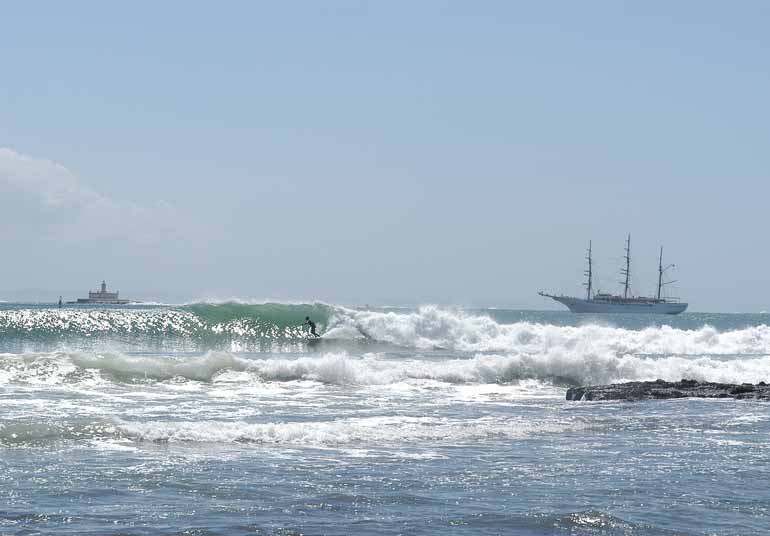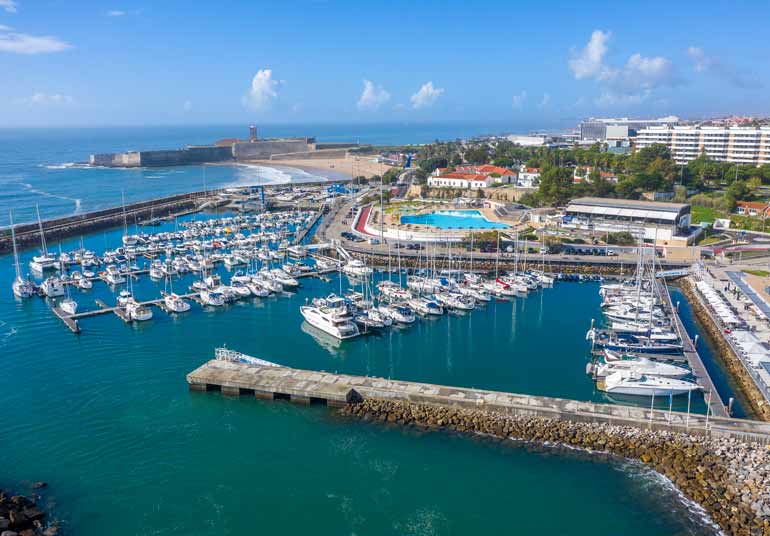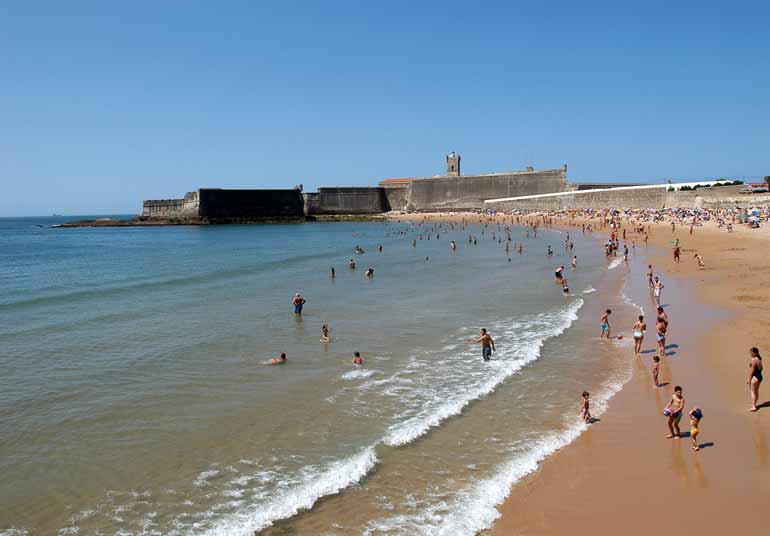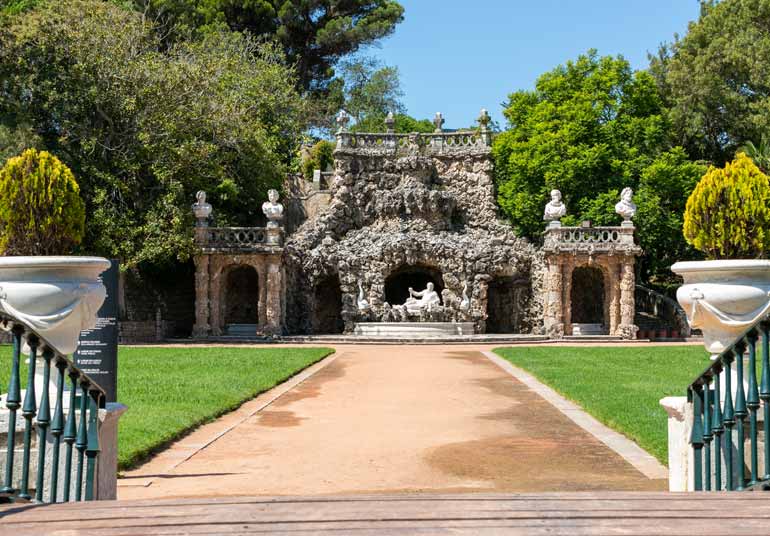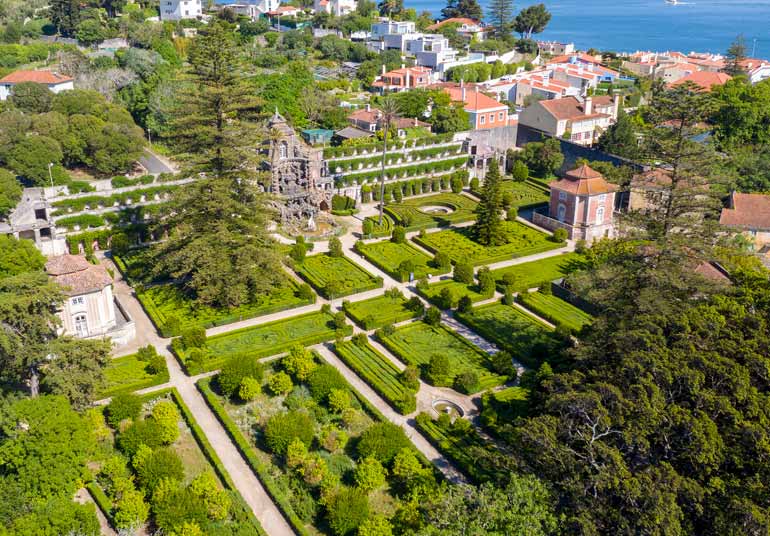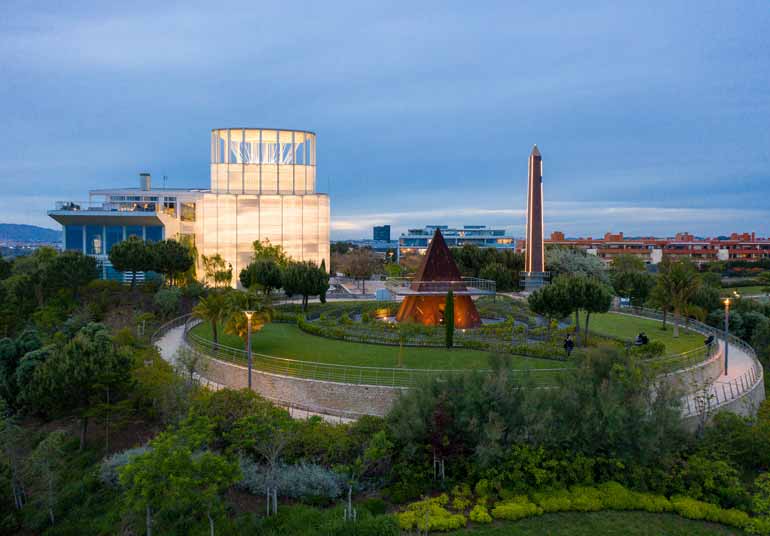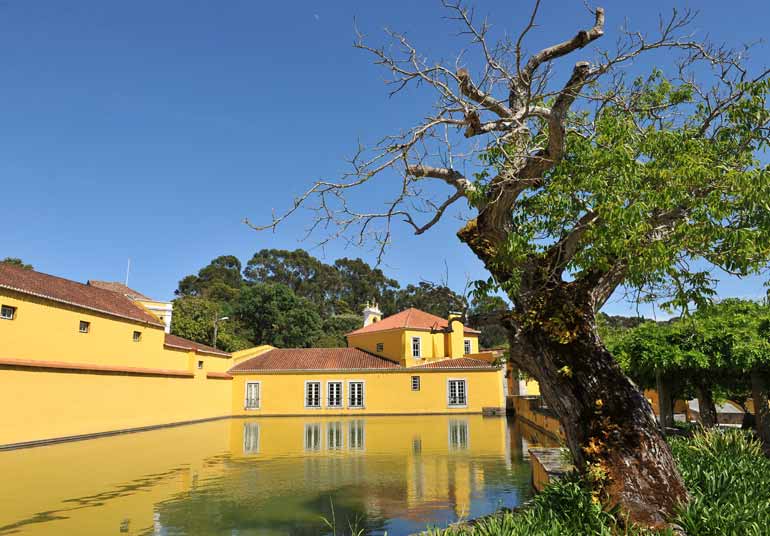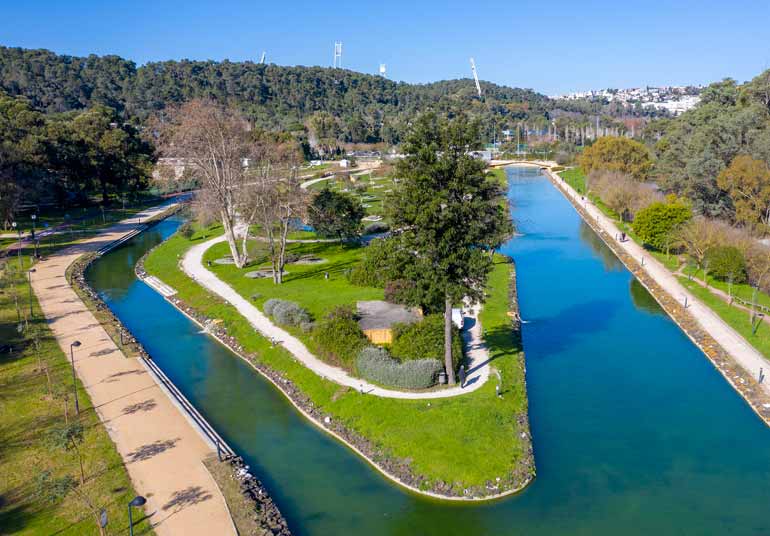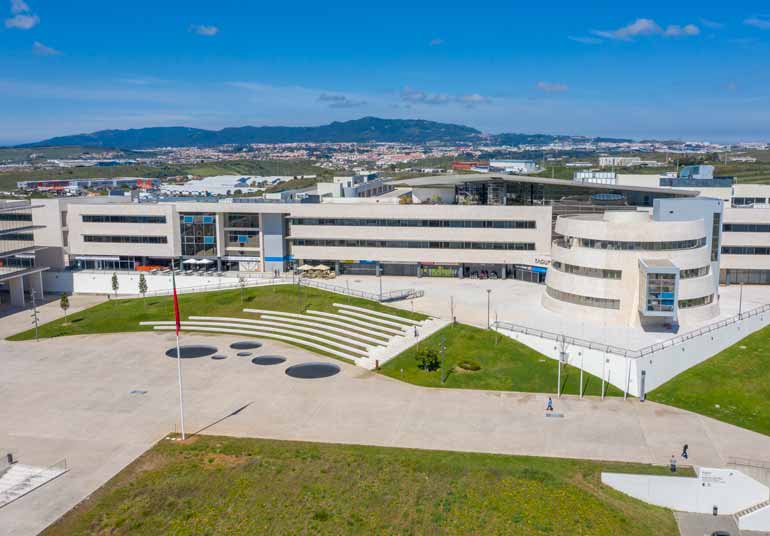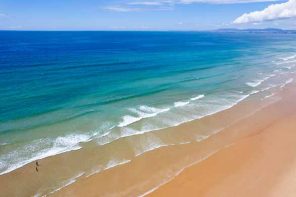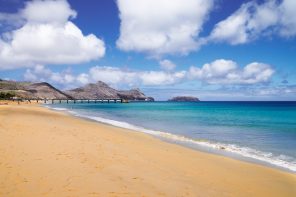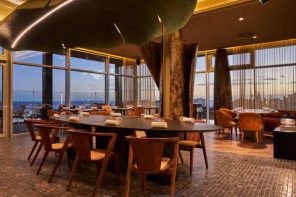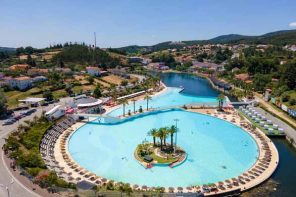HOLDING HANDS WITH THE TEJO, SO THE RIVER MAY SAFELY REACH THE OCEAN, A SEAWALL PROVES THAT OEIRAS LIVES OF CONNECTIONS AND INGENUITY. BETWEEN HOLIDAY DESTINATION, BUSINESS, IMMENSE PARKS AND MEANINGFUL URBANITY, THIS IS A PLACE THAT ONLY CHANGES TO BE AN ALTERNATIVE.
From the sea, the Bugio lighthouse rules who comes in and who gets out. Oeiras believes that this unique monument, capable of surfing waves and taming storms, is rightfully theirs. In a way, the lighthouse leads the way to a different municipality.
Oeiras municipality is one of the 18 municipalities comprising the Lisbon Metropolitan Area. It borders Lisbon on its eastern side, Cascais on the west, Sintra and Amadora at north, while the south faces the Tejo river and the Atlantic Ocean. With an area of 17.7 square miles, Oeiras is just 15 minutes away from Lisbon International Airport. Various accesses include connections through Motorway A5 or the coastal road. The network of public road transportation allows for easy connections to the entire surrounding region, supported by the railway line connecting Lisbon, Oeiras and Cascais.
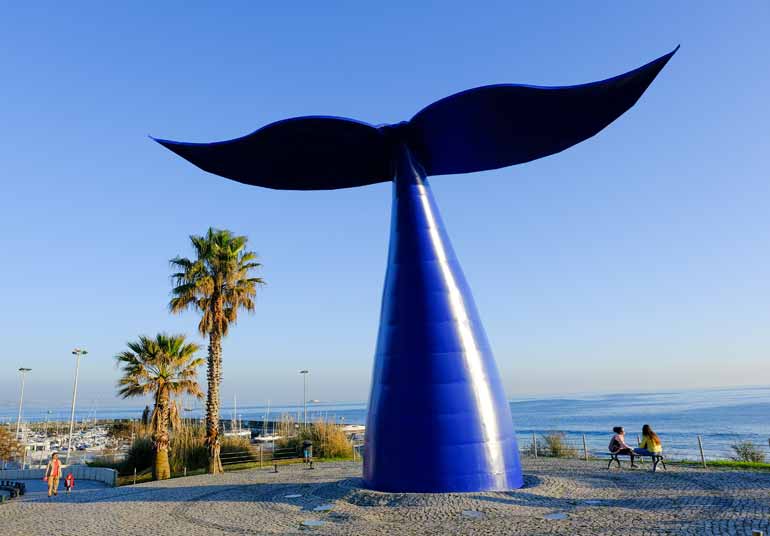
Its climate is maritime temperate, appropriate for open-air activities. On the south, the coastline extends along 5.5 miles, having the beaches of Torre, Santo Amaro de Oeiras, Paço de Arcos and Caxias as landmarks, and hoisting the Blue Flag that certifies its environmental quality.
Throughout the coastline, fortresses and lighthouses remind the strategic relevance of the municipality and the trading routes during the period of the Portuguese Maritime Discoveries. The territory has also been considered a reference agricultural and industrial area.
Sebastião José de Carvalho e Melo, an essential figure in the history of Oeiras and Portugal, was chief minister of King José I, who bequeaths him with the title of Count of Oeiras, in 1759, and with that of Marquis of Pombal, in 1770.
The varied and high-quality gastronomic offer ranges from the traditional Portuguese and the international cuisine, with emphasis on the flavours of the sea and the traditional confectionery.
Inseparable from the gastronomy is the wine, with the Demarcated Region of Carcavelos being established in 1908. Villa Oeiras brand, a Carcavelos wine produced by the Municipality in Quinta de Cima do Marquês de Pombal is a national and international reference, placing Oeiras on the route of wine tourism.
The cultural and leisure offer is another hallmark of Oeiras. The Gardens and the Palace of Marquês de Pombal, classified as a national monument, is an example of the valuable heritage of the 18th century. Fábrica da Pólvora de Barcarena (Barcarena Gunpowder Factory), Quinta Real de Caxias (Caxias Royal Farm), Parque dos Poetas (Poets’ Park), Palácio do Egipto (Egypt Palace), Palácio Anjos (Angels Palace), the old Convento da Cartuxa (Cartuxa Convent) or Vasco da Gama Aquarium are a few examples of the natural and architectural heritage there is to explore in Oeiras, alongside the religious heritage, that includes churches, chapels, and Nossa Senhora da Rocha Sanctuary.
Large sport events have also marked the agenda throughout the years, particularly Corrida do Tejo (Tagus Running Competition), Marginal à Noite (Marginal by Night), Mexa-se na Marginal (Get Active on Marginal), Travessia António Bessone Basto (António Bessone Basto Open Water Race), and Oeira’s Triathlon, among others. The entertainment programming is regular and diverse throughout the year. Large events such as NOS Alive or Festival Sete Sóis Sete Luas (Seven Suns Seven Moons Festival), art exhibitions, theatre performances, concerts, recitals, children’s entertainment, dialogues, and lectures turn the days in Oeiras more interesting. There are also fairs, markets and several festivities dedicated to gastronomy or the Portuguese popular traditions, to antiques or religious celebrations, with special emphasis on Oeiras Festivities.
The ever-growing hotel offer provides a high-quality service to all those staying in the municipality; and the large business parks, such as Taguspark, Lagoas Park, Quinta da Fonte or Arquiparque, ensure feeling the bustle of business activity but also the pulse of scientific research, with its epicentre in leading institutions in that field.
Many reasons – and more would there be – to assert that Oeiras is nowadays a modern, attractive, and dynamic municipality that managed to turn the quality of life, the environmental quality, the green areas, and its legacy into trademarks.

